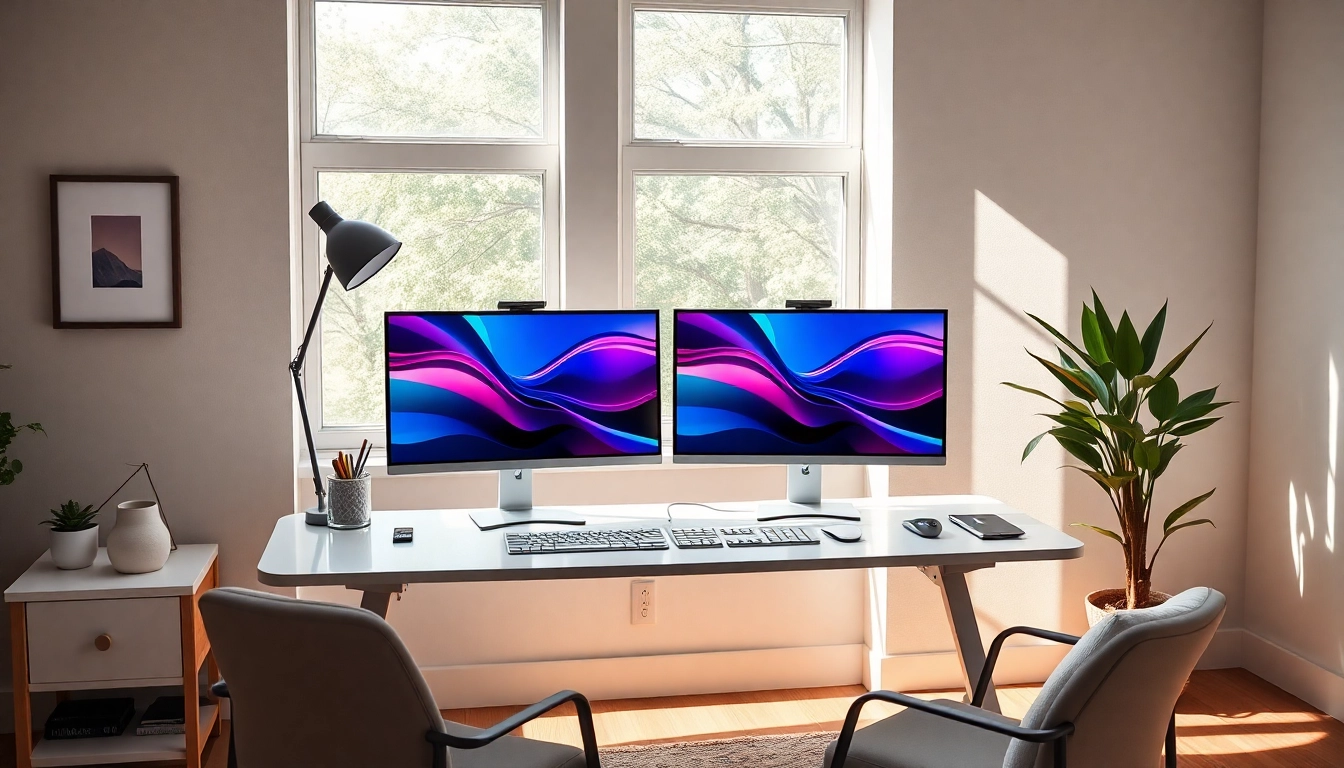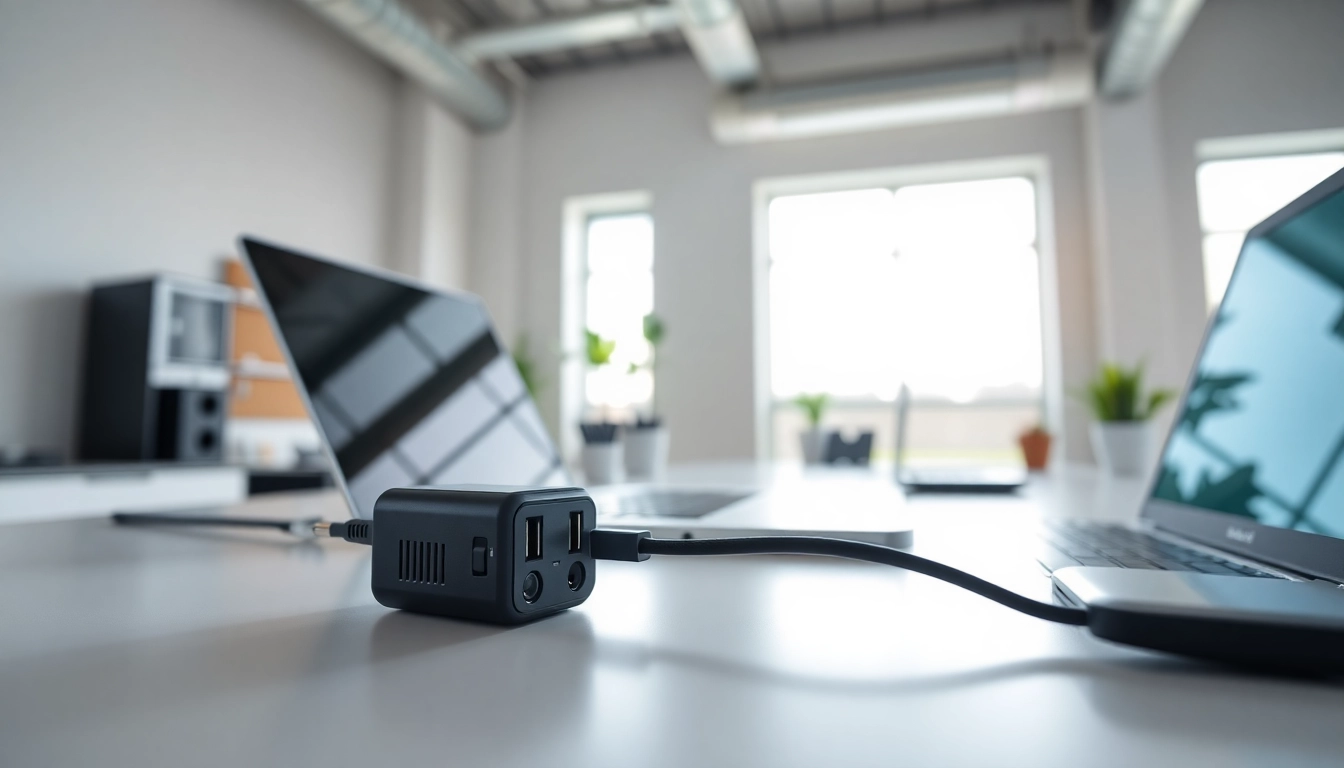1. Understanding Dual Monitor Install Requirements
Installing dual monitors can markedly increase productivity by providing more screen real estate, allowing for multitasking without the need to constantly switch between applications. However, before diving into a dual monitor install, it’s essential to understand certain key requirements that dictate whether your setup will be successful. This section will explore computer compatibility, the necessary equipment, and common connection types.
1.1. Check Computer Compatibility
The first step in setting up a dual monitor installation is to determine if your computer can support multiple displays. Most modern computers are equipped with a graphics card that can handle dual monitors, but older systems may not have this capability. Here’s how to check:
- Operating System: Ensure your operating system (Windows, macOS, or Linux) supports multiple monitors. Windows 10 and 11 have built-in support for dual displays.
- Graphics Card: Check the specifications of your GPU; most modern graphics cards come with multiple output ports (HDMI, DisplayPort, DVI, etc.).
- System Capabilities: Use system information tools to examine your hardware. You can find this in Windows via the Control Panel or use ‘System Profiler’ on macOS.
- Consult Manufacturer Documentation: For the most accurate information, consider referring to your computer or graphics card’s user manual.
1.2. Identify Necessary Equipment
Once you’ve confirmed that your computer is compatible with a dual monitor setup, the next step is to gather the necessary equipment. Here’s what you’ll need:
- Monitors: Select two monitors that meet your size and resolution needs. Consider factors like screen size, resolution (1080p, 1440p, 4K), panel type (IPS, TN, VA), and refresh rates based on how you intend to use them.
- Cables: Ensure you have the right cables to connect each monitor to the computer. This often includes HDMI, DisplayPort, or DVI cables depending on your monitors and graphics card.
- Adapters: If your monitors and graphics card have different connection types, you may need adapters (e.g., HDMI to DisplayPort).
- Desk Space: Ensure your workspace can accommodate both monitors comfortably.
1.3. Common Connection Types
There are various ways to connect your monitors to your computer, and understanding these connections is crucial:
- HDMI: Commonly used for TVs and monitors. Many systems support HDMI, making it a popular choice.
- DisplayPort: Preferred for high-resolution and high-refresh-rate setups, especially in gaming.
- DVI: An older standard that may still be found on some graphics cards and monitors.
- VGA: An older analog format that is largely being phased out but may still be encountered.
2. Preparing for a Dual Monitor Setup
Proper preparation can help smooth the installation process and ensure that you configure your setup optimally. From organizing your workspace to selecting the right monitors, this section will dive into the critical steps needed to prepare for a successful dual monitor installation.
2.1. Organizing Your Workspace
Setting up a dual monitor environment requires more than just connecting the monitors; it involves creating a conducive workspace. Consider the following:
- Desk Space: Ensure your desk has sufficient space to accommodate both monitors without clutter. Ergonomics should be a priority; monitors should be positioned at eye level and at a comfortable distance.
- Light Sources: Position your monitors away from glare caused by windows or overhead lights. Utilizing anti-glare screens can also be beneficial.
- Personal Items: Organize any non-essential items to create a more focused working environment.
2.2. Choosing the Right Monitors
Choosing the right monitors can significantly impact your productivity and user experience. Here are some factors to consider:
- Resolution: Higher resolution monitors (like 1440p or 4K) provide better detail, especially when working with high-definition content.
- Screen Size: Consider using monitors with matching sizes; this creates a more seamless experience when extending the display.
- Panel Technology: IPS panels often offer better color consistency and wider viewing angles than TN panels, making them ideal for graphic design.
- Adjustability: Monitors with height, tilt, or swivel adjustments can help you achieve comfortable viewing angles.
2.3. Reviewing Cable Options
Choosing the right type of cables is crucial for the performance and usability of your dual monitor setup:
- Length: Ensure that your cables are long enough to reach from your computer to the monitors without tension.
- Quality: High-quality cables can reduce signal degradation. Investing in well-shielded cables can prevent interference and improve image quality.
- Compatibility: Confirm that cables are compatible with both your monitors and the outputs available on your computer.
- Adapters: If necessary, get high-quality adapters to ensure a seamless connection when different standards are involved.
3. Step-by-Step Dual Monitor Installation Process
Now that you’ve prepared your workspace and gathered the necessary equipment, it’s time to move to the installation process. Here’s a comprehensive, step-by-step guide to successfully set up your dual monitors.
3.1. Connecting Your Monitors
The first hands-on step in your dual monitor installation is connecting the monitors:
- Power Off: Before connecting anything, ensure that both your computer and monitors are powered off to prevent any electrical damage.
- Connect Cables: Using the appropriate cables, connect each monitor to the corresponding ports on your graphics card. Ensure secure connections to avoid loose cables.
- Power On: Once connected, power on both your monitors and your computer.
3.2. Configuring Display Settings
After connecting the monitors, it’s essential to configure the display settings to make the most of your setup:
- Access Display Settings: On Windows, right-click on the desktop and select “Display settings.” On macOS, go to System Preferences, then Displays.
- Detect Displays: Ensure that both monitors are detected. If one doesn’t appear, click “Detect” in Windows or look under “Arrangement” on macOS.
- Adjust Settings: You can choose to extend your displays (recommended) or duplicate them. Adjust the resolution and orientation for each monitor as required.
- Set Primary Display: You can choose which monitor you would like as your primary display—this is where the taskbar (Windows) or Dock (macOS) will appear.
3.3. Testing Your Setup
With everything connected and configured, it’s time to test your dual monitor installation:
- Open Applications: Try opening applications across both monitors to ensure they are functioning correctly.
- Adjust Settings as Needed: Make any necessary adjustments to scaling or resolution based on your comfort and visibility.
- Ergonomic Check: Stand back and observe if adjustments to positions or angles are required for comfortable viewing.
4. Optimizing Your Dual Monitor Experience
After successfully installing and configuring your dual monitors, optimizing the experience will further enhance productivity. This section discusses alignment adjustments, utilizing multi-display features, and best practices for workflow management.
4.1. Adjusting Alignment and Resolution
To achieve a seamless and comfortable dual display experience, proper alignment and resolution settings are critical:
- Physical Alignment: Position your monitors at the same height and angle them toward your preferred viewing position to reduce neck strain.
- Digital Alignment: In display settings, align your monitors by dragging the monitor icons in a way that reflects their actual physical arrangement.
- Resolution Settings: Set each monitor to the optimal native resolution to avoid blurry or distorted images.
4.2. Utilizing Multi-Display Features
Modern operating systems offer various features to enhance multi-display setups. Utilize these to maximize efficiency:
- Virtual Desktops: Windows and macOS support virtual desktops, allowing you to organize applications better across multiple desktops.
- Snap Features: Windows offers a snap feature that seamlessly divides your screen between applications. Use this feature to organize content easily.
- Keyboard Shortcuts: Familiarize yourself with keyboard shortcuts that make switching between displays and applications quicker.
4.3. Best Practices for Workflow Management
Implementing effective workflow management strategies can help you make the most of your dual monitor setup:
- Strategic Application Placement: Place communication apps (like email or messaging) on one monitor and work-focused applications on the other.
- Window Management Tools: Consider third-party tools for managing multiple windows (e.g., “DisplayFusion,” “Ultramon”).
- Regular Breaks: To avoid eye strain, follow the 20-20-20 rule; take a break every 20 minutes by looking at something 20 feet away for at least 20 seconds.
5. Troubleshooting Common Dual Monitor Issues
Even after a successful installation, issues may arise when using dual monitors. This section covers some common problems and their solutions.
5.1. No Signal Errors
Encountering a “no signal” error can be frustrating. To troubleshoot:
- Check Connections: Ensure all cables are securely connected to both the monitors and the computer.
- Source Input: Make sure that the correct input source is selected on the monitor (e.g., HDMI or DisplayPort).
- Test Monitors Individually: Connect each monitor separately to confirm whether the issue lies with a specific monitor or cable.
5.2. Display Configuration Problems
Problems with display configuration can hinder productivity. Try the following fixes:
- Revisit Display Settings: Go back into your display settings and check if the monitors appear as expected. Reconnect if needed.
- Driver Updates: Ensure your graphics card drivers are updated to the latest version for optimal performance.
- Reset Display Configuration: Reset the display configuration to default settings and reconfigure.
5.3. Performance Optimization Tips
To keep your dual monitor setup running smoothly, consider these performance optimization tips:
- Close Unnecessary Applications: Limit the number of open applications to reduce system strain.
- Monitor Usage Stats: Utilize tasks manager or system monitoring applications to check resource usage.
- Upgrade Hardware: If performance issues persist, consider upgrading components such as RAM or the graphics card.




